Abstract
Bleomycin is a chemotherapuetic drug used primarily in the treatment of squamous-cell carcinoma, while misonidazole is an effective radiosensitizer and potent cytotoxic agent selectively affecting hypoxic cells. V79 Chinese hamster cells were used to investigate the cytotoxicity of bleomycin (BLM) under aerated and hypoxic conditions as a function of drug concentration. At a lowered temperature of 17.5 degrees C, or at an elevated temperature of 42.5 degrees C, hypoxic cells are more sensitive to killing by BLM than aerated cells. At either of these temperatures, progression through the cell cycle is inhibited. However, at 37.5 degrees C, mimicking a clinical situation, the sensitivies are reversed, and hypoxic cells are appreciably more resistant. Although many factors are involved, the major reason for this is that aerated cells are cycling while hypoxic cells are not. Aerated cells can progress into phases of the cell cycle where they are more sensitive to killing by BLM. Misoinidazole (=Ro-07-0582) was used in combination with BLM, since its mode of action has been shown to be psecific for killing hypoxic cells. It concomitant use with BLM could be of potential use in chemotherapy when confronted with the hypoxic cell component of solid tumours.
Full text
PDF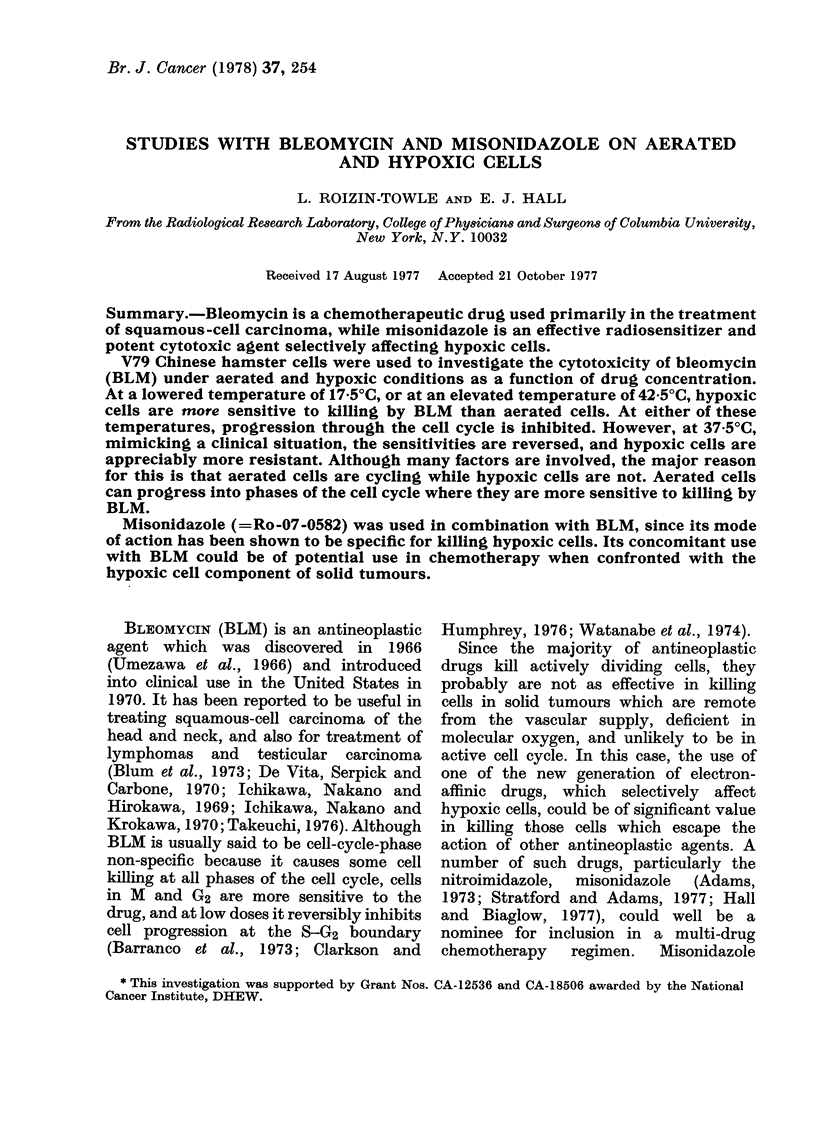
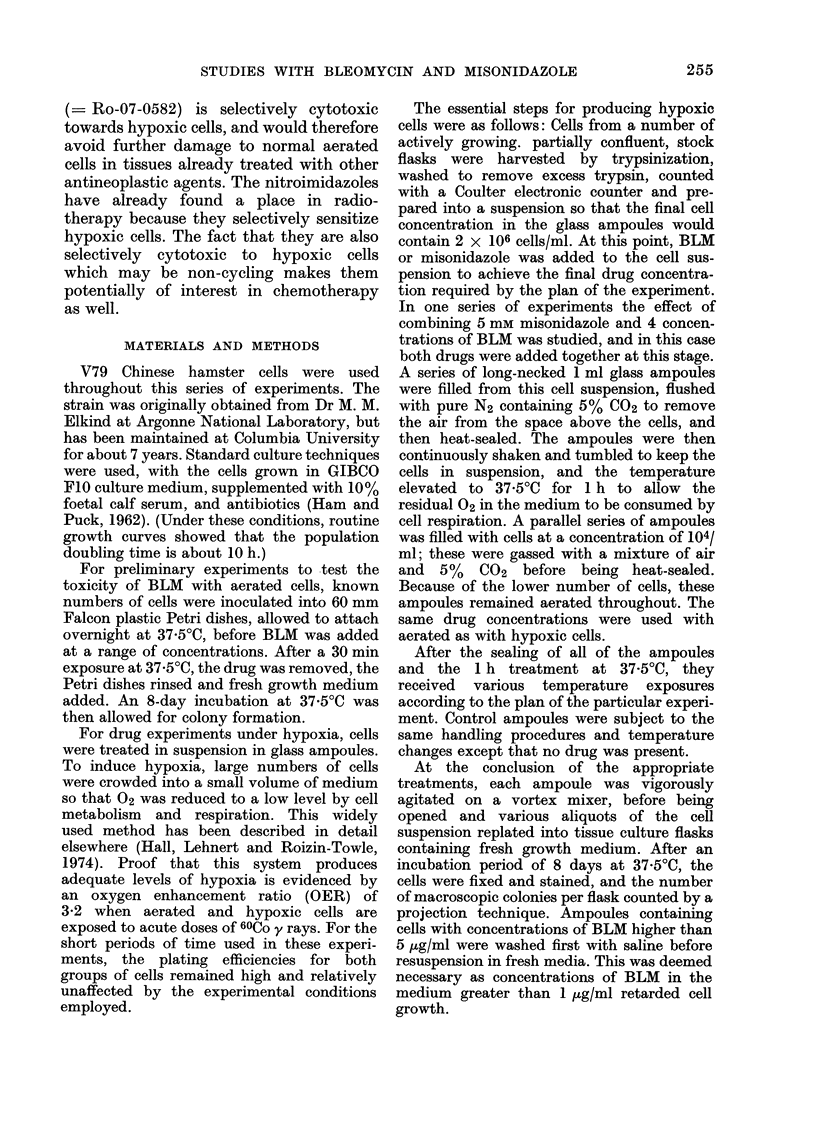
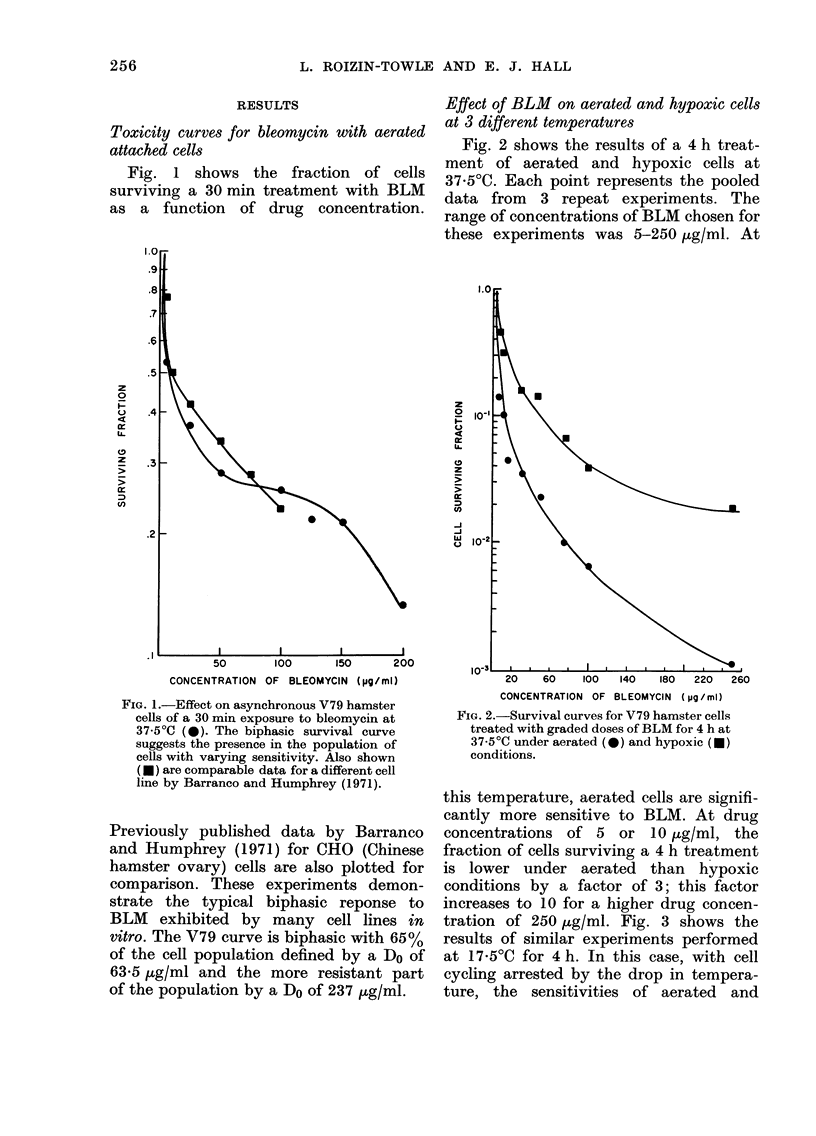
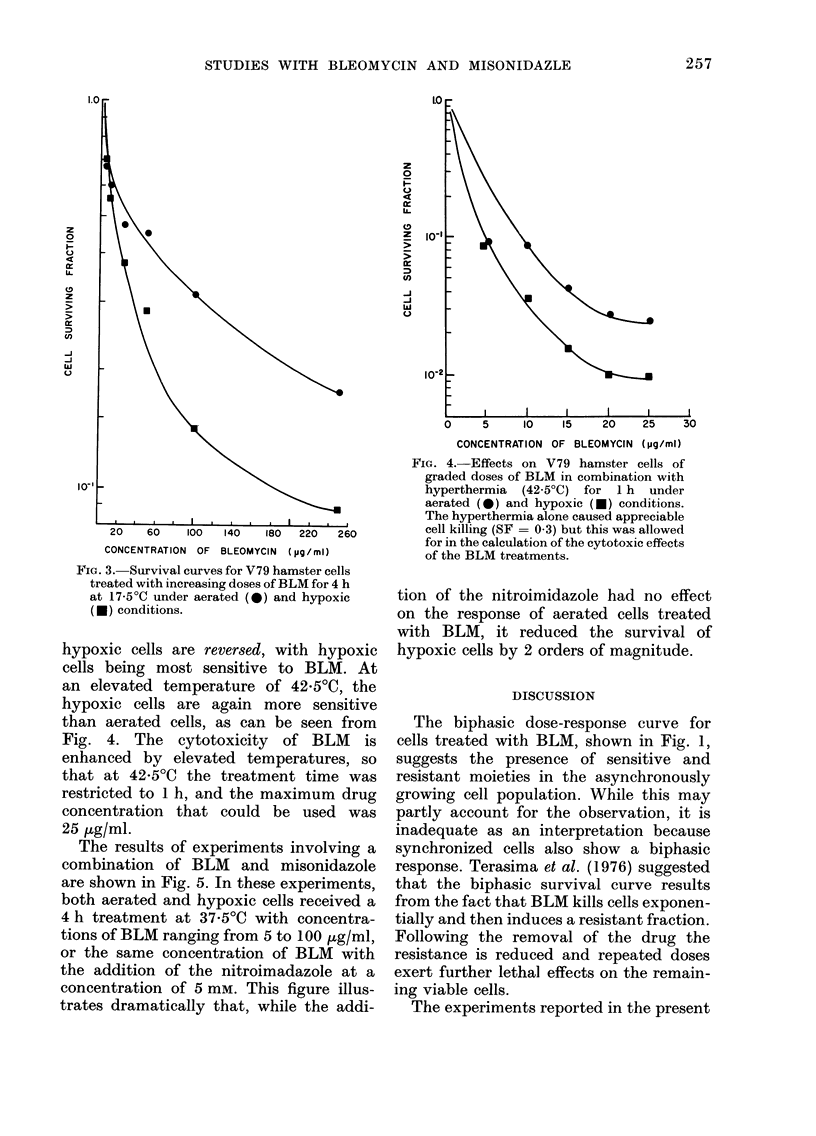
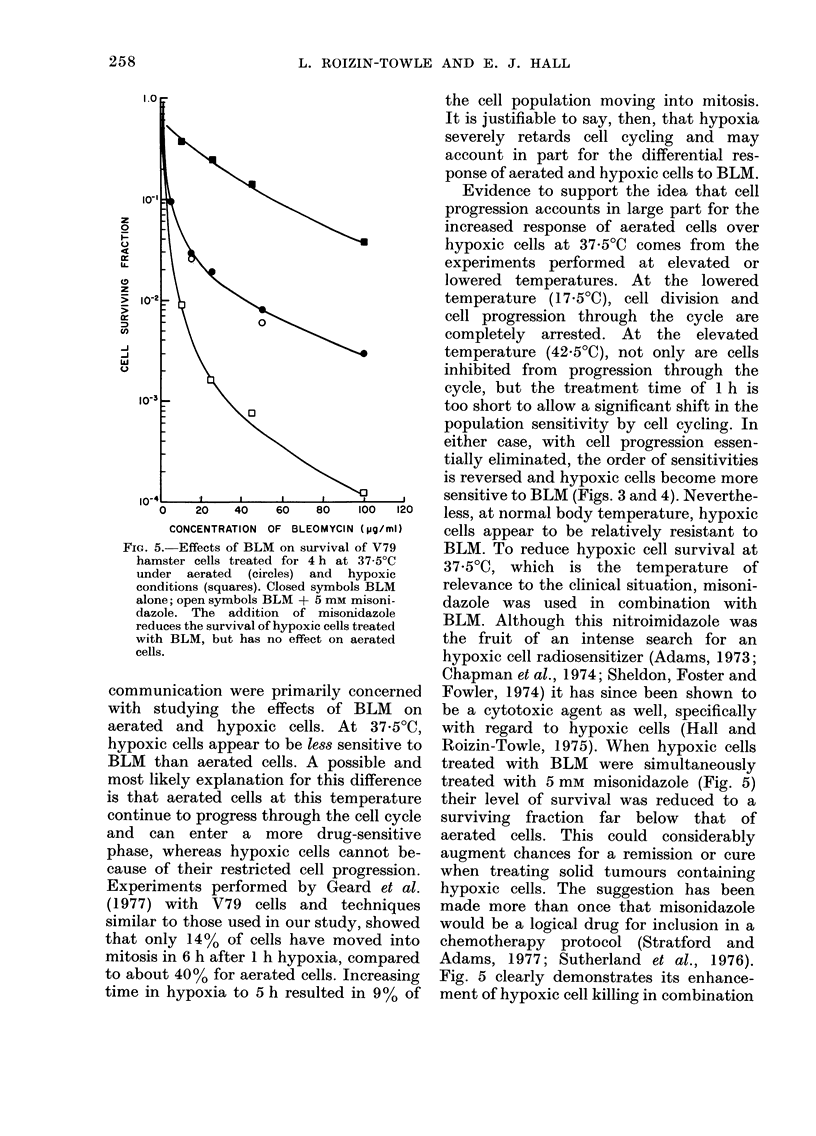
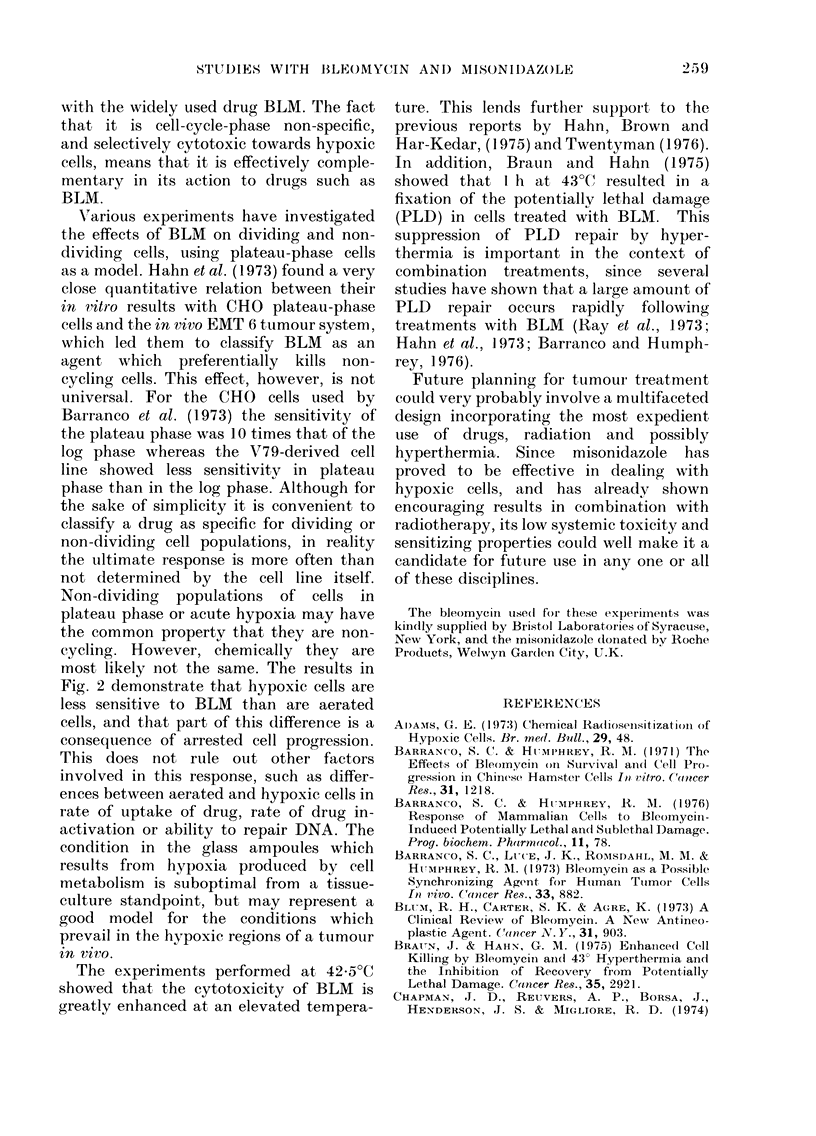
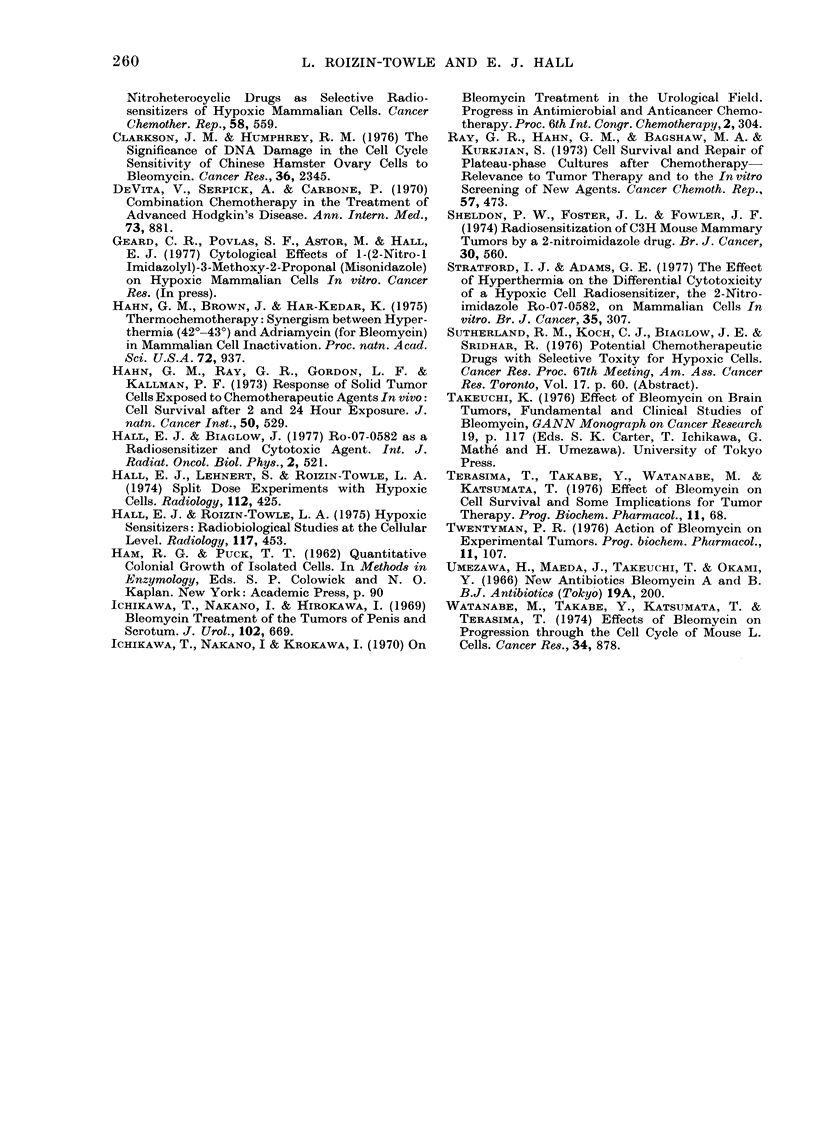
Selected References
These references are in PubMed. This may not be the complete list of references from this article.
- Adams G. E. Chemical radiosensitization of hypoxic cells. Br Med Bull. 1973 Jan;29(1):48–53. doi: 10.1093/oxfordjournals.bmb.a070956. [DOI] [PubMed] [Google Scholar]
- Barranco S. C., Humphrey R. M. The effects of bleomycin on survival and cell progression in Chinese hamster cells in vitro. Cancer Res. 1971 Sep;31(9):1218–1223. [PubMed] [Google Scholar]
- Blum R. H., Carter S. K., Agre K. A clinical review of bleomycin--a new antineoplastic agent. Cancer. 1973 Apr;31(4):903–914. doi: 10.1002/1097-0142(197304)31:4<903::aid-cncr2820310422>3.0.co;2-n. [DOI] [PubMed] [Google Scholar]
- Braun J., Hahn G. M. Enhanced cell killing by bleomycin and 43 degrees hyperthermia and the inhibition of recovery from potentially lethal damage. Cancer Res. 1975 Nov;35(11 Pt 1):2921–2927. [PubMed] [Google Scholar]
- Chapman J. D., Reuvers A. P., Borsa J., Henderson J. S., Migliore R. D. Nitroheterocyclic drugs as selective radiosensitizers of hypoxic mammalian cells. Cancer Chemother Rep. 1974 Jul-Aug;58(4):559–570. [PubMed] [Google Scholar]
- Clarkson J. M., Humphrey R. M. The significance of DNA damage in the cell cycle sensitivity of Chinese hamster ovary cells to bleomycin. Cancer Res. 1976 Jul;36(7 Pt 1):2345–2349. [PubMed] [Google Scholar]
- Devita V. T., Jr, Serpick A. A., Carbone P. P. Combination chemotherapy in the treatment of advanced Hodgkin's disease. Ann Intern Med. 1970 Dec;73(6):881–895. doi: 10.7326/0003-4819-73-6-881. [DOI] [PubMed] [Google Scholar]
- Hahn G. M., Braun J., Har-Kedar I. Thermochemotherapy: synergism between hyperthermia (42-43 degrees) and adriamycin (of bleomycin) in mammalian cell inactivation. Proc Natl Acad Sci U S A. 1975 Mar;72(3):937–940. doi: 10.1073/pnas.72.3.937. [DOI] [PMC free article] [PubMed] [Google Scholar]
- Hahn G. M., Ray G. R., Gordon L. F., Kallman R. F. Response of solid tumor cells exposed to chemotherapeutic agents in vivo: cell survival after 2- and 24-hour exposure. J Natl Cancer Inst. 1973 Feb;50(2):529–533. doi: 10.1093/jnci/50.2.529. [DOI] [PubMed] [Google Scholar]
- Hall E. J., Biaglow J. Ro-07-0582 as a radiosensitizer and cytotoxic agent. Int J Radiat Oncol Biol Phys. 1977 May-Jun;2(5-6):521–530. doi: 10.1016/0360-3016(77)90163-8. [DOI] [PubMed] [Google Scholar]
- Hall E. J., Lehnert S., Roizin-Towle L. Split-dose experiments with hypoxic cells. Implications for fractionated and low-dose-rate radiotherapy. Radiology. 1974 Aug;112(2):425–430. doi: 10.1148/112.2.425. [DOI] [PubMed] [Google Scholar]
- Hall E. J., Roizin-Towle L. Hypoxic sensitizers: radiobiological studies at the cellular level. Radiology. 1975 Nov;117(2):453–457. doi: 10.1148/117.2.453. [DOI] [PubMed] [Google Scholar]
- Ray G. R., Hahn G. M., Bagshaw M. A., Kurkjian S. Cell survival and repair of plateau-phase cultures after chemotherapy--relevance to tumor therapy and to the in vitro screening of new agents. Cancer Chemother Rep. 1973 Nov-Dec;57(4):473–475. [PubMed] [Google Scholar]
- Sheldon P. W., Foster J. L., Fowler J. F. Radiosensitization of C3H mouse mammary tumours by a 2-nitroimidazole drug. Br J Cancer. 1974 Dec;30(6):560–565. doi: 10.1038/bjc.1974.235. [DOI] [PMC free article] [PubMed] [Google Scholar]
- Stratford I. J., Adams G. E. Effect of hyperthermia on differential cytotoxicity of a hypoxic cell radiosensitizer, Ro-07-0582, on mammalian cells in vitro. Br J Cancer. 1977 Mar;35(3):307–313. doi: 10.1038/bjc.1977.44. [DOI] [PMC free article] [PubMed] [Google Scholar]
- Terasima T., Takabe Y., Watanabe M., Katsumata T. Effect of bleomycin on cell survival and some implications for tumor therapy. Prog Biochem Pharmacol. 1976;11:68–77. [PubMed] [Google Scholar]
- Twentyman P. R. Action of bleomycin on experimental tumours. Prog Biochem Pharmacol. 1976;11:107–109. [PubMed] [Google Scholar]
- Umezawa H., Maeda K., Takeuchi T., Okami Y. New antibiotics, bleomycin A and B. J Antibiot (Tokyo) 1966 Sep;19(5):200–209. [PubMed] [Google Scholar]
- Watanabe M., Takabe Y., Katsumata T., Terasima T. Effects of bleomycin on progression through the cell cycle of mouse L-cells. Cancer Res. 1974 Apr;34(4):878–881. [PubMed] [Google Scholar]


